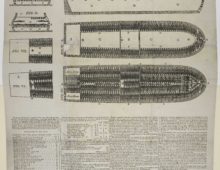Tagged with Discoveries
Resource : Weir smallpox vaccinator
In the 1700s smallpox was probably the single most lethal disease in Britain – especially among children. But in 1796 Edward Jenner made a discovery that would eradicate the disease and lead to a revolution in public health – it would become known as vaccination.
He noticed that dairymaids who caught a minor disease called cowpox, from infected cows, seemed immune to smallpox – a common but much more serious disease.
Resource : Chloroform Inhaler
Today it’s hard to imagine having an operation with no pain relief. But before the 1840s, major procedures such as amputating a leg were done without anaesthetics.
Resource : Davy lamp
The humble miner’s safety lamp is, arguably, one of the most important inventions of the 1800s. The industrial revolution saw coal overtake wood as the most important fuel source for new industries and cities, with an ever increasing demand driving production and placing pressure on safe and efficient extraction. A lamp that could light the way, without causing a disastrous explosion, was as essential a piece of a miner’s kit as a pick-axe.
Resource : Faraday’s Electric Generator
This simple-looking and basic device, built by Michael Faraday in 1831, revolutionised almost every aspect of the lives of people all over the world. It is the first ever generator of electricity.


